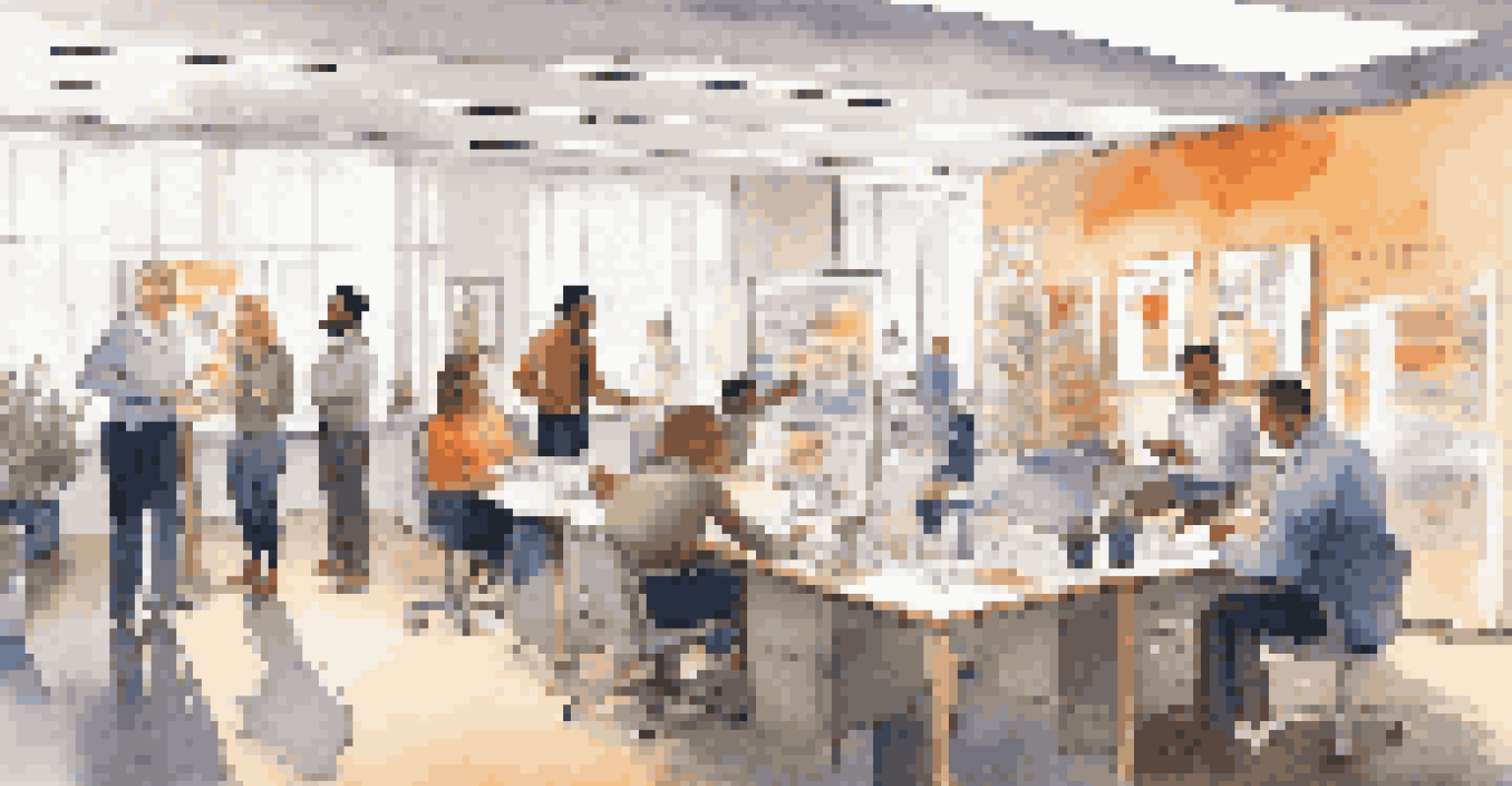Best Practices for Building a Multigenerational Workforce

Understanding the Value of a Multigenerational Workforce
A multigenerational workforce brings together employees from various age groups, each with unique perspectives and skills. This diversity fosters creativity and innovation, as different generations contribute their experiences and ideas. For instance, younger employees may be more tech-savvy, while older workers often have extensive industry knowledge. Embracing this blend is key to thriving in today’s dynamic work environment.
Diversity is the one true thing we all have in common. Celebrate it every day.
Moreover, companies that harness the strengths of all generations can improve problem-solving and decision-making processes. Each generation tends to approach challenges differently, which can lead to more robust solutions. By valuing these differences, organizations can create a culture of collaboration that drives success.
Ultimately, understanding the value of a multigenerational workforce not only enhances productivity but also helps in attracting top talent. Job seekers today often look for inclusive environments that embrace diversity, making it crucial for employers to highlight their commitment to multigenerational teams.
Fostering Open Communication Among Generations
Effective communication is vital for any team, but it’s especially important in a multigenerational workforce. Different age groups may have varying communication styles, so it’s essential to establish channels that accommodate everyone. For example, older employees might prefer face-to-face meetings, while younger generations often favor instant messaging or emails.

Creating an environment where all team members feel comfortable sharing their thoughts and ideas can significantly enhance collaboration. Encouraging regular feedback sessions and open discussions helps bridge the communication gap. When everyone feels heard, it leads to stronger relationships and a more cohesive team.
Value of Multigenerational Teams
A diverse workforce enhances creativity and problem-solving by leveraging unique strengths from different age groups.
Additionally, consider implementing mentorship programs that pair younger employees with seasoned professionals. This not only facilitates knowledge transfer but also fosters understanding and respect for each other’s communication preferences. By promoting open dialogue, organizations can create a unified workplace culture.
Tailoring Training to Diverse Learning Styles
Training programs should be designed with an awareness of different learning preferences across generations. While younger employees may thrive in digital training environments, older workers might benefit from hands-on, traditional training methods. Acknowledging these differences ensures that all employees can engage with the material effectively.
The strength of the team is each individual member. The strength of each member is the team.
For instance, incorporating a mix of e-learning modules, workshops, and interactive sessions can cater to various learning styles. This not only keeps the training fresh but also helps employees feel more invested in their professional development. When training is inclusive, it boosts retention and application of knowledge across the workforce.
Moreover, providing opportunities for continuous learning can motivate employees of all ages. Encourage workers to pursue relevant certifications or attend industry conferences, which can enhance their skills and confidence. By prioritizing diverse training methods, organizations empower their employees to grow and succeed.
Creating an Inclusive Workplace Culture
An inclusive workplace culture is one where all employees feel valued and respected, regardless of their age. To cultivate this environment, organizations should actively promote diversity and inclusion initiatives. This could involve celebrating various cultural events or hosting workshops that focus on generational awareness.
Additionally, leadership plays a crucial role in modeling inclusive behavior. When leaders actively demonstrate respect and appreciation for all generations, it sets a positive tone for the entire organization. Employees are more likely to embrace inclusivity when they see it reflected in their company’s culture.
Importance of Open Communication
Establishing effective communication channels fosters collaboration and understanding among employees of all ages.
Furthermore, regularly assessing employee satisfaction through surveys can help identify areas for improvement. Gathering feedback allows organizations to address any concerns and make necessary adjustments, ensuring that everyone feels included and engaged at work.
Encouraging Collaboration Across Generations
Promoting collaboration among different generations can lead to innovative solutions and enhanced team dynamics. To facilitate this, consider implementing cross-generational project teams. By mixing employees from various age groups, you encourage knowledge sharing and diverse perspectives.
For instance, a project team consisting of both seasoned veterans and recent graduates can create a balance of experience and fresh ideas. This collaboration not only drives creativity but also helps bridge the generational divide, fostering mutual respect and understanding.
Moreover, recognizing and celebrating the achievements of collaborative efforts can reinforce the value of teamwork. Highlighting success stories in company communications promotes a culture of collaboration, motivating employees to continue working together across generations.
Recognizing and Valuing Individual Contributions
Every employee has unique strengths, and recognizing these contributions is essential for a motivated workforce. Celebrate accomplishments that reflect the diverse talents of your multigenerational team. This could be through awards, public acknowledgments, or team highlights in company newsletters.
By valuing individual contributions, organizations show that they appreciate the diverse skills and perspectives that each generation brings. This recognition fosters a sense of belonging, encouraging employees to continue putting forth their best efforts.
Tailoring Training Methods
Adapting training programs to diverse learning styles engages all employees and promotes continuous professional development.
Additionally, providing opportunities for employees to showcase their work can boost morale and engagement. Whether through presentations, showcases, or team meetings, giving employees a platform to shine reinforces their value within the organization.
Adapting Policies for a Multigenerational Workforce
To effectively support a multigenerational workforce, organizations must adapt their policies to meet diverse needs. This includes flexible work arrangements, such as remote work options and flexible hours. Such policies can accommodate different life stages and work preferences, making the workplace more appealing to all generations.
For example, younger employees might prioritize work-life balance, while older generations may seek stability and benefits that support retirement planning. By recognizing these varying priorities, companies can create policies that cater to the needs of their entire workforce.

Additionally, regularly reviewing and updating policies ensures they remain relevant and effective. Engaging employees in this process can provide valuable insights into what works and what needs improvement, creating a more inclusive and supportive work environment.